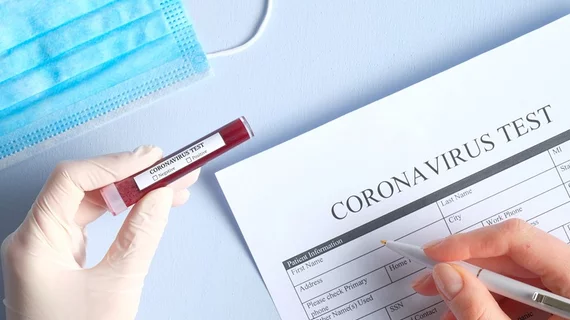Chest CT yields higher sensitivity than lab testing standard for diagnosing coronavirus
Experts have maintained that radiologists are crucial in identifying and diagnosing the novel coronavirus, and a new series of patient examples further cements imaging’s important role in fighting this virus.
Chinese researchers explored a case set of 51 patients with confirmed COVID-19 who underwent both chest CT and real-time polymerase chain reaction (RT-PCR) lab testing. The retrospective analysis, published Feb. 19 in Radiology, found that CT was far more sensitive when screening those with the infection compared to lab testing.
In fact, chest CT notched a 98% sensitivity rate for correctly identifying those with the disease, compared to 71% for RT-PCR, Yicheng Fang, with Affiliated Taizhou Hospital of Wenzhou Medical University, and colleagues reported. The modality should be used as a trusted tool amid the current COVID-19 outbreak, they said.
“In our series, the sensitivity of chest CT was greater than that of RT-PCR,” Fang, with the university’s department of radiology, and colleagues added. “Our results support the use of chest CT for screening for COVID-19 for patients with clinical and epidemiologic features compatible with COVID-19 infection particularly when RT-PCR testing is negative.”
The most recent news out of the World Health Organization indicates that the virus has killed more than 2,000 individuals and afflicted an additional 75,000. Viral nucleic acid detection using RT-PCR remains the standard of reference for diagnosing coronavirus, but its “low efficiency” in this most recent set of cases may be caused by a few reasons, the authors wrote. They listed four in the study, published Wednesday:
1. Nucleic acid detection technology in itself may not be fully matured.
2. The detection rate varies among different manufacturers.
3. Potential improper clinical sampling.
4. Patients may only have small amounts of the virus in their system.
A report published Feb. 4 in Radiology, detailed imaging markers that radiologists should look out for in suspected coronavirus cases, including bilateral ground-glass and consolidative pulmonary opacities, nodular opacities, crazy-paving pattern and other indicators.
Authors of that study also reported that some patients initially had normal chest CTs, but developed abnormalities days later. They warned that clinicians cannot rely on computed tomography alone to distinguish the virus.

